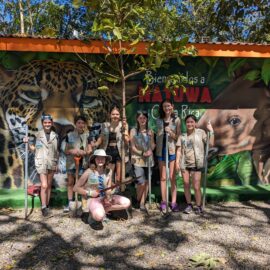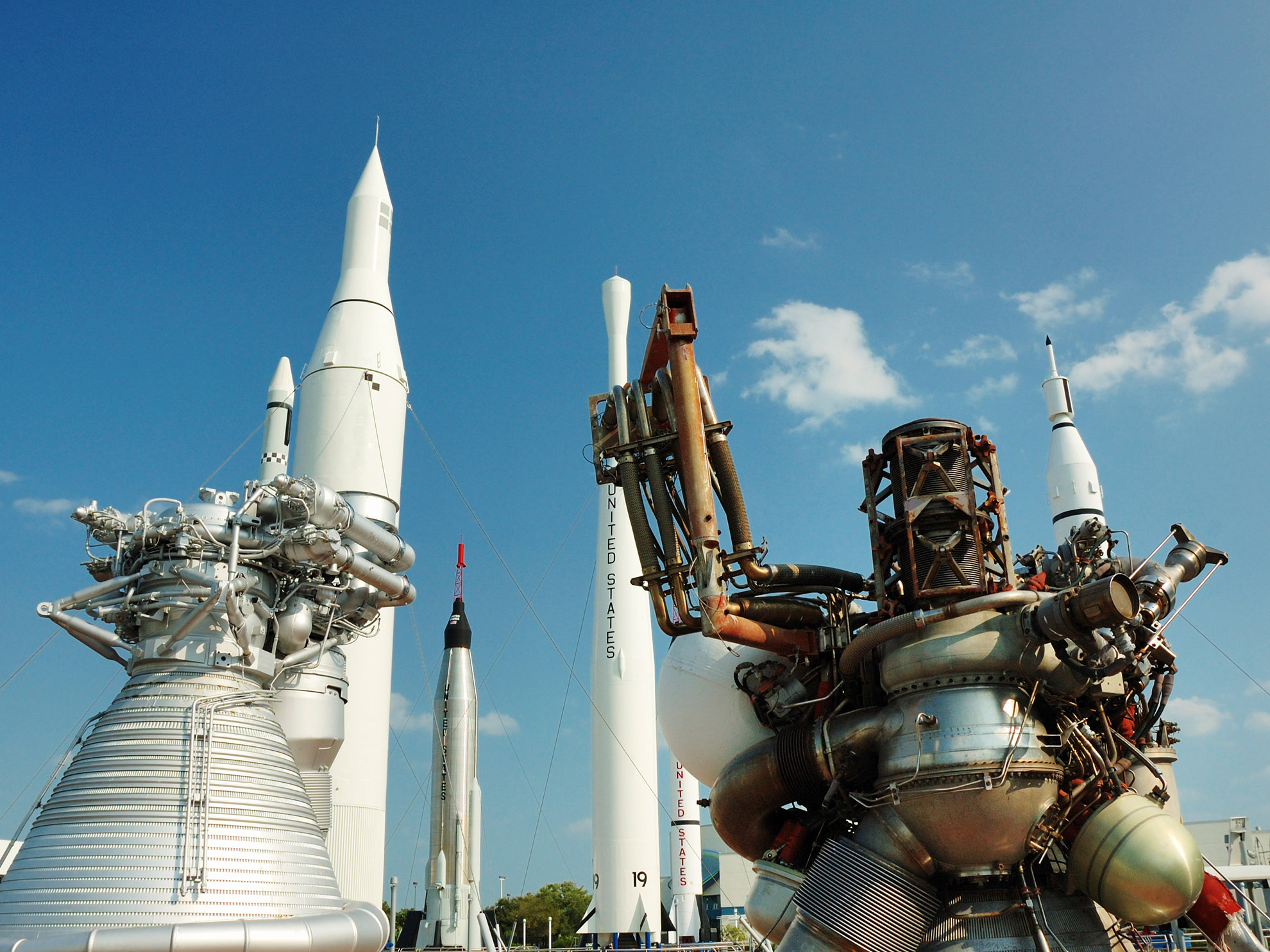Destination Spotlight
Kennedy Space Center
Students journey into NASA’s past, present, and future when they see and understand how the Space Program refused to let failure stand in its way of exploring the final frontier.
- Students will re-live the launch of Apollo 9 and the moon landing of Apollo 11 while the Course Leader discusses the challenges of living in a microgravity environment.
- Students get up-close to the most substantial components of space travel when they take the interactive narrated tour and visit the Vehicle Assembly Building (one of the world’s largest structures), where space shuttles are constructed and readied for launch, and when they explore the Saturn V Rocket display building.
- Students are asked to demonstrate the principle of action and reaction, Newton’s third law of motion, and construction of a timeline relating to the development of rockets and space travel.
- Students understand the interaction of today’s computer technology is shaping tomorrow’s space program when they see the massive 6 million-pound Crawler Transporters that carry the space shuttles from the Vehicle Assembly Building to the launch pad.
- Students have an “Astronaut Encounter” where they can ask questions to a real astronaut about personal experiences in space when visiting the Kennedy Space Center .
- Students become fully immersed in the experience of life in space and see a virtual tour of the International Space Station when watching “The Dream is Alive” or “Space Station 3-D” in the huge IMAX theater.
Did you know?
- In 1981, M&M’s Chocolate Candies were chosen by the first space shuttle astronauts to be included in their food supply.
- The popular toy Slinky has gone up in several space shuttles to test the zero-gravity effects on the physical laws that govern springs.
- The Space Shuttles each contain more than 34,000 separate heat shielding tiles, each specifically cut for its own location. The heat dissipation process is so effective that the tiles, heated to 2,325ºF, can be held at the corners in your bare hands.
- Astronauts aren’t the only professionals who contribute to space exploration. Also playing integral roles are Chemical Engineers, Agricultural Engineers, Test Pilots, and Communications Specialists.
- When astronauts exercise on the Shuttle, lack of gravity prevents the sweat from falling off their bodies. The sweat collects in puddles on their bodies.
- The cargo bay of a space shuttle is large enough to hold one humpback whale, and still have room for 1,000 herrings.
Links:
Related Articles

The 2024 WorldStrides Student Photo & Video Contest Gallery
Students journey into NASA’s past, present, and future when they see and understand how the Space Program refused to let failure stand in its way of exploring the final frontier. Students will re-li...

Girl Scouts: Costa Rica Tour
Students journey into NASA’s past, present, and future when they see and understand how the Space Program refused to let failure stand in its way of exploring the final frontier. Students will re-li...

2024 Mérida Pride Parade
Students journey into NASA’s past, present, and future when they see and understand how the Space Program refused to let failure stand in its way of exploring the final frontier. Students will re-li...

Rise Up, Take Action: How to Support the LGBTQIA+ Community
Students journey into NASA’s past, present, and future when they see and understand how the Space Program refused to let failure stand in its way of exploring the final frontier. Students will re-li...


